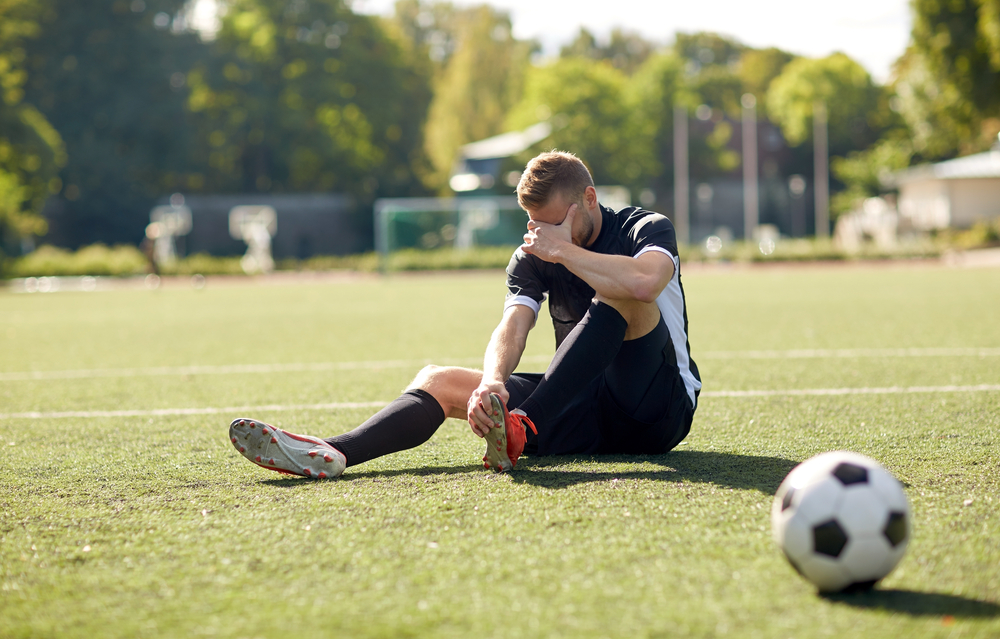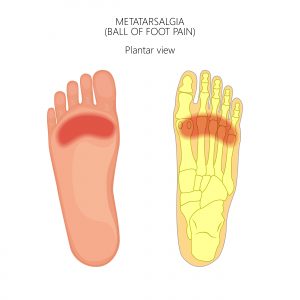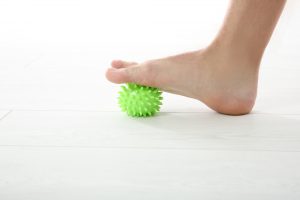
What is Metatarsalgia?
The structure of your feet is very complicated, and it’s an amazing fact that they contain a quarter of the bones in your entire body. Among these bones are the five long metatarsals that run from the arch to your toes. They are very important bones as they act as shock absorbers when the foot is in motion. The metatarsal head refers to the top of each metatarsal. Pain in the ball of the foot can happen when one or more metatarsal heads becomes inflamed. The pain can be caused by a number of different underlying conditions and is known by the general term of metatarsalgia.
How Does Running Affect the Metatarsals?
Another amazing fact is that during running the forefoot absorbs over 110 tons of cumulative force per mile. If your weight is distributed unevenly across your foot when it hits the road, the metatarsals can get irritated and become inflamed, resulting in metatarsalgia. The condition usually builds up gradually over a few months and could be the result of overtraining. However, it can also occur suddenly, for instance if one day you decide to run on an uneven surface. It affects all shapes of feet – it doesn’t matter if you have flat feet, high arches, or anything in between.
What Are the Symptoms of metatarsalgia?
 If your metatarsals become inflamed, you will experience a burning or aching sensation, or stabbing pain just beneath your toes. Most commonly the pain affects the second toe and often the third or fourth. You may also feel that you have a pebble in your running shoe.
If your metatarsals become inflamed, you will experience a burning or aching sensation, or stabbing pain just beneath your toes. Most commonly the pain affects the second toe and often the third or fourth. You may also feel that you have a pebble in your running shoe.
How Can I Prevent Metatarsalgia?
-
The Right Running Shoe
The number one preventative is wearing the right shoe. If your foot is the flat to neutral type, you need a running shoe designed with a wide toe box and a metatarsal pad that is dome shaped to protect the metatarsals from pounding. If you are a runner with high arches, choose a shock-absorbing insole to provide a platform for your foot and thick cushioning to deflect pressure from the metatarsals. Find a store that specializes in shoes for runners, such as Runner’s High here in Freehold, to get a shoe that’s the best fit for you. And, don’t forget about the shoes you put on your feet when you’re not running – ladies, those high heels and narrow toe boxes might look good, but they won’t help your metatarsalgia.
-
Exercises
Tight leg muscles add pressure to the forefoot. Combined with correct footwear, exercises specifically designed for runners will keep many different running problems at bay including metatarsalgia. See Running Stretches for Beginners (actually not just for beginners) and exercises with a foam roller or massage ball.
Home Treatment Options
You can try to treat metatarsalgia yourself by doing the following:
- Give your feet a break from running. For exercise, switch to a lesser impact activity such as fast walking
- Rest, with your feet elevated
- Ice your feet
- Take anti-inflammatories (e.g., ibuprofen)
- Try shoe inserts designed to reduce pressure on the metatarsal heads – metatarsal pads or an orthotic
- Use a leg roller to help ease tight muscles
Download a Free Copy of our Metatarsalgia Care Instructions
 In Office Treatment
In Office Treatment
If things don’t improve, it’s time to visit a podiatrist. Because pain in the ball of the foot can have other causes than inflammation of the metatarsals, you need a podiatrist who understands running injuries. I will review your running history, accurately diagnose the cause of your pain, and come up with a customized treatment plan. I can determine if you need a different metatarsal pad, another kind of shoe insert, a callus shaved, or an orthotic. If the underlying cause of your foot pain is not immediately obvious, you may be advised to have X rays taken, or to undergo an ultrasound or MRI. It may be appropriate to inject the problem area with cortisone to reduce the inflammation.
Don’t Ignore Metatarsalgia
If left untreated and you continue to run, metatarsalgia can lead to bone bruising, joint swelling, chronic stiffness, and decreased range of motion. I have treated many running injuries and will aim to get you back to running as quickly as possible. Don’t delay – contact us today.